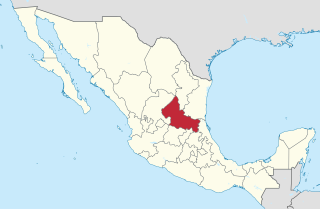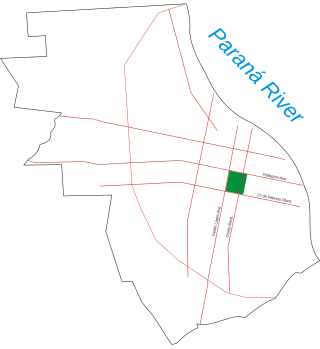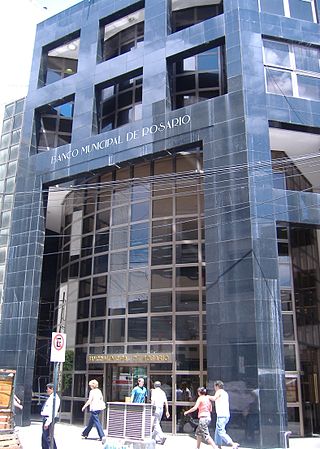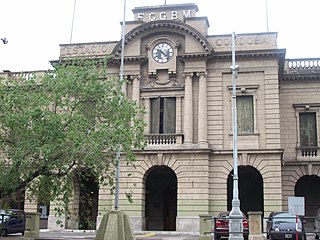Related Research Articles

José Celso Barbosa Alcala was a Puerto Rican physician, sociologist and political leader. Known as the father of the statehood movement in Puerto Rico, Barbosa was the first Puerto Rican, and one of the first persons of African descent to earn a medical degree in the United States.

Villahermosa is the capital and largest city of the Mexican state of Tabasco, and serves as the municipal seat of the state. Located in Southeast Mexico, Villahermosa is an important city because of its cultural history, natural resources, commercial development, and modern industrialization.

Bogotá, officially Bogotá, Distrito Capital, abbreviated Bogotá, D.C., and formerly known as Santa Fe de Bogotá during the Spanish Colonial period and between 1991 and 2000, is the capital city of Colombia, and one of the largest cities in the world. The city is administered as the Capital District, as well as the capital of, though not part of, the surrounding department of Cundinamarca. Bogotá is a territorial entity of the first order, with the same administrative status as the departments of Colombia. It is the political, economic, administrative, and industrial center of the country.

San Luis Potosí, officially the Free and Sovereign State of San Luis Potosí, is one of the 32 states which compose the Federal Entities of Mexico. It is divided in 58 municipalities and its capital city is San Luis Potosí City.

Rosario is the largest city in the central Argentine province of Santa Fe. The city is located 300 km (186 mi) northwest of Buenos Aires, on the west bank of the Paraná River. Rosario is the third-most populous city in the country, and is also the most populous city in Argentina that is not a capital. With a growing and important metropolitan area, Greater Rosario has an estimated population of 1,750,000 as of 2020. One of its main attractions includes the neoclassical, Art Nouveau, and Art Deco architecture that has been retained over the centuries in hundreds of residences, houses and public buildings.

Cúcuta, officially San José de Cúcuta, is a Colombian municipality, capital of the department of Norte de Santander and nucleus of the Metropolitan Area of Cúcuta. The city is located in the homonymous valley, at the foot of the Eastern Ranges of the Colombian Andes, on the border with Venezuela. It comprises an area of approximately 1119 km2, with an urban area of 64 km2 and a rural area of 1055 km2. The city has a population of 777,106 inhabitants, which makes it the most populous municipality in the department and the sixth most populous municipality in the country. Similarly, its metropolitan area has an approximate population of 1,046,347.

Óscar Luis Castañeda Lossio was a Peruvian politician who was the Mayor of Lima, the capital city of Peru, from 2003 to 2010. He became Mayor of Lima again in 2015, after being elected for a third nonconsecutive term with 51% of the popular vote, for a term that lasted until 31 December 2018. He ran for President of Peru twice, in the 2000 elections placing fifth, prior to his mayoral campaign in 2002, and in the 2011 elections, placing fifth again with 9.8% of the vote.

Rosario lies by the Paraná River, about 300 km upstream from the Argentine capital Buenos Aires; it is a major port and an industrial, commercial and cultural center. It grew from its humble origins to be the third most populated city in Argentina and the largest in the province of Santa Fe. Manuel Belgrano created the flag of Argentina in Rosario.

This article is about the government of Rosario, the third most populated city in Argentina, and the largest in the province of Santa Fe. Rosario has about 910,000 inhabitants 2001 census [INDEC] and is located on the western shore of the Paraná River.

The Mayor of Madrid presides over the Madrid City Council, the government body of the capital city of Spain. The mayor has the duty of boosting the local policies, it directs the action of the other executive bodies, leads the Local Executive Administration and is accountable to the Plenary for its political management.

The Parque de la Independencia is a large public park in Rosario, province of Santa Fe, Argentina. It is located near the geographical center of the city, its limits defined by Moreno Street and three important avenues: Pellegrini Avenue, Ovidio Lagos Avenue, and 27 de Febrero Boulevard. It has a surface area of 1.26 km2 (0.49 sq mi).

National Route 9 is a major road in Argentina, which runs from the center-east to the northwest of the country, crossing the provinces of Buenos Aires, Santa Fe, Córdoba, Santiago del Estero, Tucumán, Salta and Jujuy. It starts on Avenida General Paz, which marks the border between the Autonomous City of Buenos Aires and the surrounding province of the same name, and ends at the Horacio Guzmán International Bridge, on the La Quiaca River, traversing 1,967 km (1,222 mi). The road is a limited access motorway from Buenos Aires to Rosario.

Jose Manuel Cayetano Marroquín Ricaurte was a Colombian political figure and the 27th President of Colombia.

The Municipal Bank of Rosario is a bank in Rosario, province of Santa Fe, Argentina. Its central offices are located in the downtown area, on San Martín St., and there are several additional offices throughout the city. It is focused in small and medium enterprises and other organizations, especially through microcredits, and may be considered an "ethical bank".

Plaza Santiago Montenegro is a small hardscape plaza in the city of Rosario, province of Santa Fe, Argentina. Its name honors one of the first Spanish-descended settlers in the area, Captain Santiago Montenegro. It was known as Plaza Pinasco until 1993.

The Central Argentine Railway, referred to as CA below, was one of the Big Four broad gauge, 5 ft 6 in British companies that built and operated railway networks in Argentina. The company had been established in the 19th century, to serve the provinces of Santa Fe and Córdoba, in the east-central region of the country. It would later extend its operations to Buenos Aires, Tucumán, and Santiago del Estero. The railroad had a complicated relationship with its employees in the 1910s, and then it had a complicated relationship with the government of Argentina in the 1920s.

Prostitution in Spain is not addressed by any specific law, but a number of activities related to it, such as pimping, are illegal. In 2016, UNAIDS estimated there to be 70,268 prostitutes in the country, although other estimates put the number higher. Most prostitutes in the country are immigrants. The sex industry in Spain is estimated to be worth €3.7 billion.

Virginia Bolten was an Argentine journalist as well as an anarchist and feminist activist of German descent. A gifted orator, she is considered as a pioneer in the struggle for women's rights in Argentina. She was deported to Uruguay in 1902, where she remained until her death.

Pedro Fermín de Mendinueta was the Spanish colonial governor of Santa Fe de Nuevo México province from 1767 to 1777, located in the northern Viceroyalty of New Spain.

Córdoba is a train station in the city of the same name of Córdoba Province, Argentina.
References
- (in Spanish) Municipality of Rosario. List of mayors
- (in Spanish) Asociación Familia Molisana de Rosario. History of Rosario.
- (in Spanish) La Capital. 21 Sep 2003. Las fantasías y los espacios de placer en la ciudad de ayer.
- (in Spanish) La Capital. 21 Feb 2004. Rosario desconocida: Un siglo de esplendor.